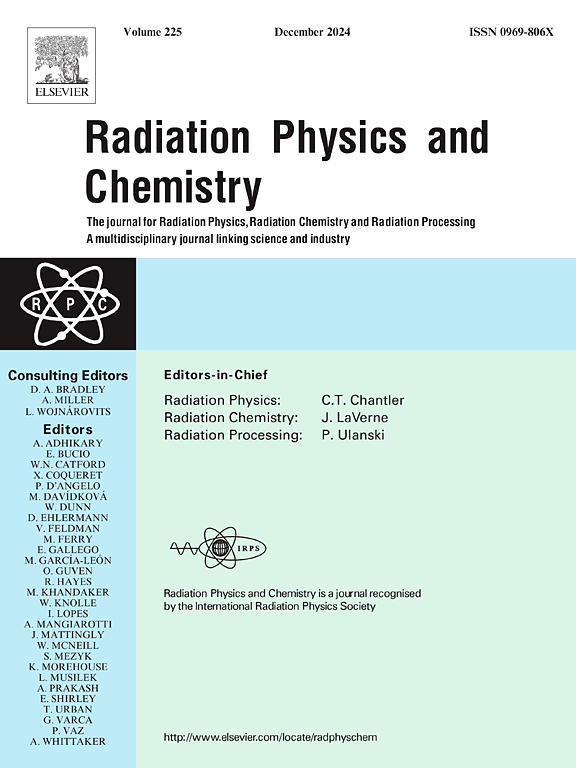Radiation protection assessment of patient activation and dosimetry in Boron Neutron Capture Therapy
IF 2.8
3区 物理与天体物理
Q3 CHEMISTRY, PHYSICAL
引用次数: 0
Abstract
Boron Neutron Capture Therapy (BNCT) is a form of radiotherapy based on the irradiation of the tumor with a low energy neutron beam, after the administration of a selective drug enriched in boron-10. The therapy exploits the high cross section of thermal neutron capture in boron, generating two low-range charged particles. The availability of accelerators able to generate high-intensity neutron beams via proton nuclear interaction is boosting the construction of new clinical centers. One of these is under development in Italy, using a 5 MeV, 30 mA proton radiofrequency accelerator coupled to a beryllium target, funded by the Complementary Plan to the Recovery and Resilience National Plan, under the project ANTHEM. The present study focuses on radiation protection aspects of patients undergoing BNCT, specifically on the activation of their organs and tissues. A criterion to establish the relevance of such activation after BNCT has been proposed. Based on the current Italian regulatory framework, the level of patient activation following BNCT treatment does not pose a significant radiological concern, even shortly after irradiation. Another aspect is the activation of patient’s excretions, which can impact on the design of the building and requires a process for the discharge. The described study contributes to the radiation protection study for the ANTHEM BNCT centre in Italy.
硼中子俘获治疗中患者激活和剂量学的辐射防护评估
硼中子俘获疗法(BNCT)是一种基于低能量中子束照射肿瘤的放射治疗形式,在给予富含硼-10的选择性药物后。该疗法利用硼中热中子捕获的高横截面,产生两个低范围带电粒子。能够通过质子核相互作用产生高强度中子束的加速器的可用性正在推动新的临床中心的建设。其中一个正在意大利开发中,使用5兆电子伏,30毫安质子射频加速器与铍靶相耦合,由恢复和弹性国家计划补充计划资助,在ANTHEM项目下。本研究的重点是BNCT患者的辐射防护方面,特别是他们的器官和组织的激活。已经提出了一个标准来确定BNCT后这种激活的相关性。根据目前意大利的监管框架,BNCT治疗后的患者激活水平不会造成显著的放射学问题,即使在照射后不久也是如此。另一个方面是病人排泄物的激活,这可能会影响建筑的设计,并且需要一个排泄过程。所描述的研究有助于意大利ANTHEM BNCT中心的辐射防护研究。
本文章由计算机程序翻译,如有差异,请以英文原文为准。
求助全文
约1分钟内获得全文
求助全文
来源期刊

Radiation Physics and Chemistry
化学-核科学技术
CiteScore
5.60
自引率
17.20%
发文量
574
审稿时长
12 weeks
期刊介绍:
Radiation Physics and Chemistry is a multidisciplinary journal that provides a medium for publication of substantial and original papers, reviews, and short communications which focus on research and developments involving ionizing radiation in radiation physics, radiation chemistry and radiation processing.
The journal aims to publish papers with significance to an international audience, containing substantial novelty and scientific impact. The Editors reserve the rights to reject, with or without external review, papers that do not meet these criteria. This could include papers that are very similar to previous publications, only with changed target substrates, employed materials, analyzed sites and experimental methods, report results without presenting new insights and/or hypothesis testing, or do not focus on the radiation effects.
 求助内容:
求助内容: 应助结果提醒方式:
应助结果提醒方式:


